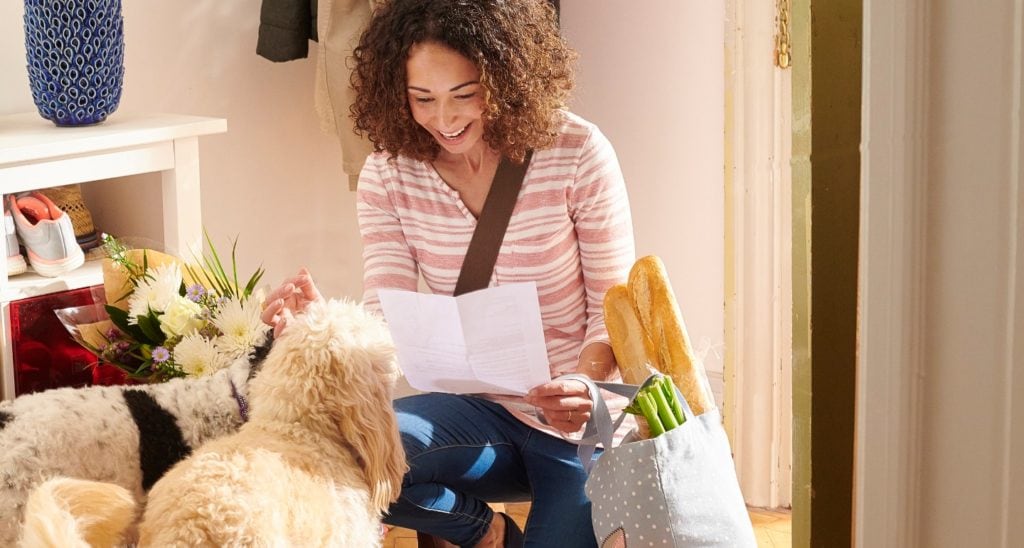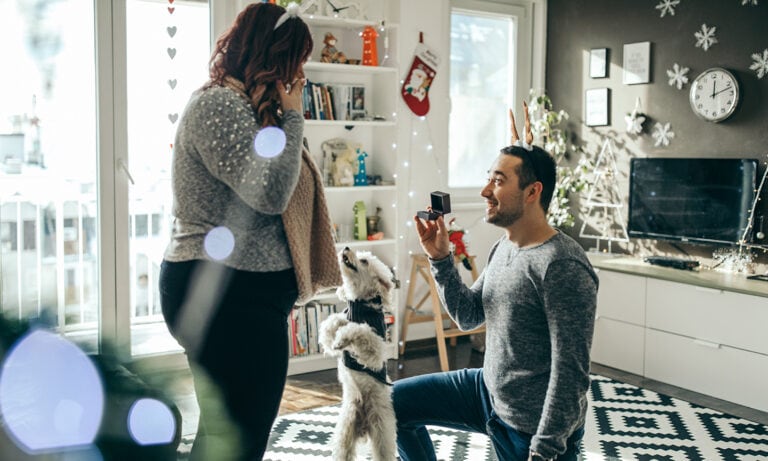Feeling anxious about going away and leaving your pup behind? Having someone come to your home rather than boarding your dog may make you (and your dog) feel better while you’re away.
Pet sitters offer more individualized pet care services, and your pup will have free range to roam, rather than being confined to a cage or a room. Not to mention that you’ll have peace of mind knowing that the sitter is only a phone call or text away, and that they are providing constant care and supervision.
Tips to Help You Prep for a Pet Sitter
Before you hit the road, here is what you should do to prep for a pet sitter to watch your beloved family member.
Do a Pet Sitter Test Run
Puppy sitting allows you the chance to do a few “test runs” so you can see how well your dog reacts to spending time away from home with somebody else.
“Having the dog spend time with the pet sitter before the owner actually leaves them together can help put into perspective what will happen while they’re actually out of the picture,” explains Joan Hunter Mayer, a certified professional dog trainer in Santa Barbara, CA. “Waiting until the last minute can cause undue stress—on the dog and the owners.”
Be sure to schedule several meetings so that your pooch can become acquainted with her new pet care provider before the actual day you leave.
Be Clear About Pet Care Expectations
Don’t leave for your trip before discussing your expectations in detail with your pet sitter.
Do you want regular photo updates? Do you expect to receive text messages or emails daily? Do you want the sitter to take your pup on hour-long walks and to the dog park for play sessions each day?
“Seeing that your pet is having a good time while you are gone can make your trip more enjoyable. It can reduce the stress you may be feeling about leaving your furry loved one behind,” says Jacobs.
To keep even closer tabs on your dog’s daily exercise, the Whistle 3 Dog & Cat GPS Tracker & Activity Monitor allows you to track your pup’s walks and check her activity levels right from your phone, no matter where you are.
Be Honest About Any Bad Habits
If you don’t want your house (or the sitter’s house) to be in shambles when you return, Jacobs also suggest letting your pet sitter know about your pet’s bad habits.
“Any potentially destructive or annoying habit should be disclosed, including chewing on furniture, going to the bathroom in the house, digging up the yard or barking,” says Jacobs. “You also should let your sitter know how to prevent these habits from happening. For example, if your dog likes to dig up your yard, make sure your sitter knows to not leave your dog unaccompanied in your yard. Or if your dog barks at other dogs that walk by your home, tell your sitter to keep the blinds closed to prevent incessant barking.”
Being open about your pup’s bad habits could help prevent serious—and expensive—accidents.
“Coming home to a $3,000 vet bill because your dog ate an entire plush toy while the sitter’s back was turned is a dangerous and costly situation that could be easily prevented by instructing the sitter appropriately in advance,” says Matt Tuzzo, CTC, CPDT-KA, owner and head dog trainer/behavior consultant at Jersey Shore Dogs. “Don’t assume the pet sitter will know.”
If your dog is a chewer, consider leaving some dog toys behind to keep him occupied (and away from expensive furniture or shoes). Antlers, such as the Barkworthies Deer Antler Dog Chews, are safe choices recommended by veterinarians over rawhides. Or try the Starmark Everlasting Bento Ball with Dental Treat Dog Chew Toy, which encourages play in a tasty way.
Talk About Food Schedules
There’s more to feeding your pet than just leaving some food with the pet sitter. For starters, you should always let your sitter know if your pet has any food aggression. “If your pet has been known to snap at people or other pets who come too close to their food bowl while they are eating, this is a vital piece of information you must disclose for safety purposes,” explains Ashley Jacobs, the CEO/Founder of Sitting for a Cause, a website that connects pet parents with pet sitters and donates a portion of profits to animal shelters.
For dogs who are missing their owners, routine can be a wonderful tool as well. “I would advise feeding at the dog’s usual time(s), with the usual foods (maybe an extra yummy treat to help with forming a positive association), using the usual delivery system—bowl, interactive food toy, training game,” says Hunter Mayer. “Adhering to a normal routine could help ease stress when their usual routine has been disrupted.” Don’t be shy about leaving detailed instructions on feeding times and methods. Leave treats behind for the sitter too, such as Milk-Bone Original Large Biscuit Dog Treats, along with an note that says when and how many to give.
Put Together a Care Kit
While food and medication might be the obvious supplies to bring to your pet sitter’s home, there are other items you should in a special pet care kit.
In addition to leaving a batch of dog poop bags, such as Frisco Refill Dog Poop Bags for the sitter, Jacobs recommends sending along your pet’s bed, a few of their favorite toys, and an article of clothing that smells like you.
“It’s stressful for a pet to be without their loved one (especially if they are in a new, unfamiliar place), so having reminders of home can make them more comfortable and reduce the odds of behavioral issues while you are away,” Jacobs says.
You should also put essential items that you use every day with your pet, like a leash for walks and wipes for easy clean-up.
Another essential item for your kit is an emergency veterinary release to ensure pet care is possible in case of an emergency. A pet resort would usually ask for this, but many pet owners forget to also give one to a pet sitter.
“A release ensures that the sitter, as well as their veterinarian, know exactly what to do in the event their pet has a medical emergency,” Jacobs says. “This is especially important if you are traveling somewhere with limited cell phone reception and/or Wi-Fi that would make it difficult for your sitter or veterinarian to contact you to discuss medical needs.”
Plan for the Unexpected
While hopefully not needed, Hunter Mayer recommends having a backup plan in case something happens to the pet sitter and he or she cannot fulfill their duties.
“What if the owners are gone for longer than they anticipated and the pet sitter isn’t available,” says Hunter Mayer. “Do you have a friend, neighbor, or relative who can step in and help?” Knowing that somebody’s available “just in case” can help ease your mind and ensure your pup will be cared for.
And even if your pet is microchipped, make sure he also has an ID tag with a current phone number on it. Accidents happen, and if your pet gets lost, you want to make it easy for people to contact you.
Services like the one offered by Platinum Pets Pawsitively Safe Pet Finder Tag for Dogs make a reunion even simpler, as there’s an online setup that notifies you by text message when your pet is found and where he is.

Diana Bocco is a full-time writer and adventurer who has written for National Geographic, DiscoveryChannel.com, Yahoo! and Marie Claire. Diana has lived in five countries and taken her rescued dogs along to each one of them.
Share:


















